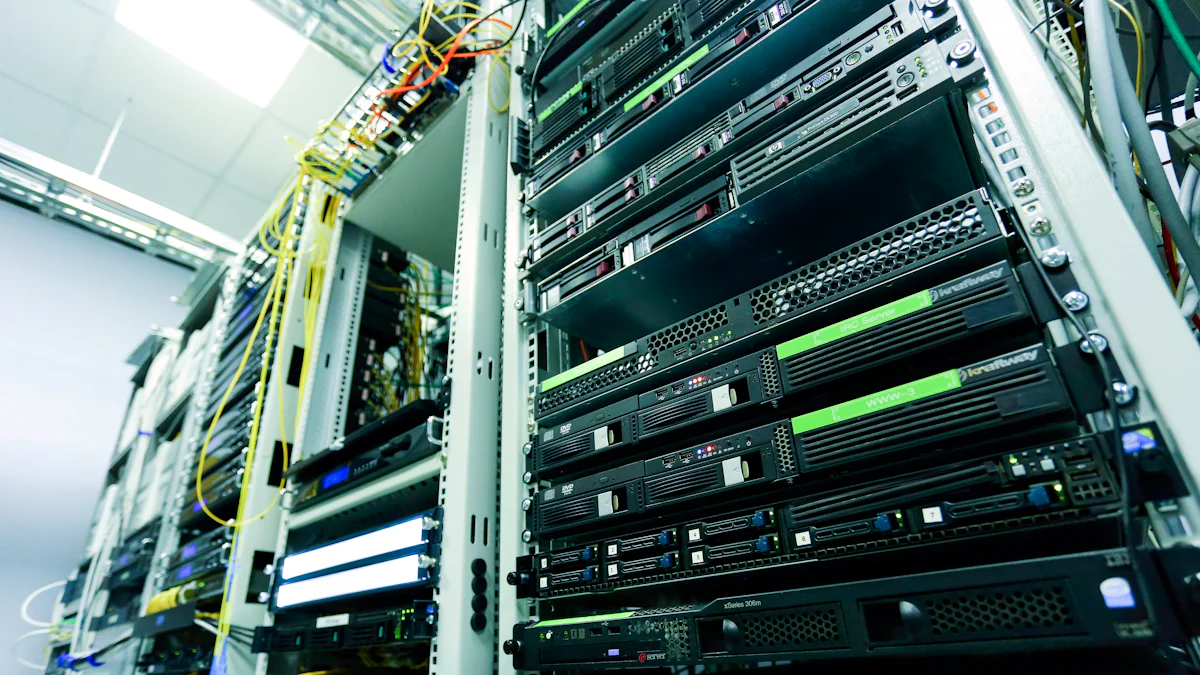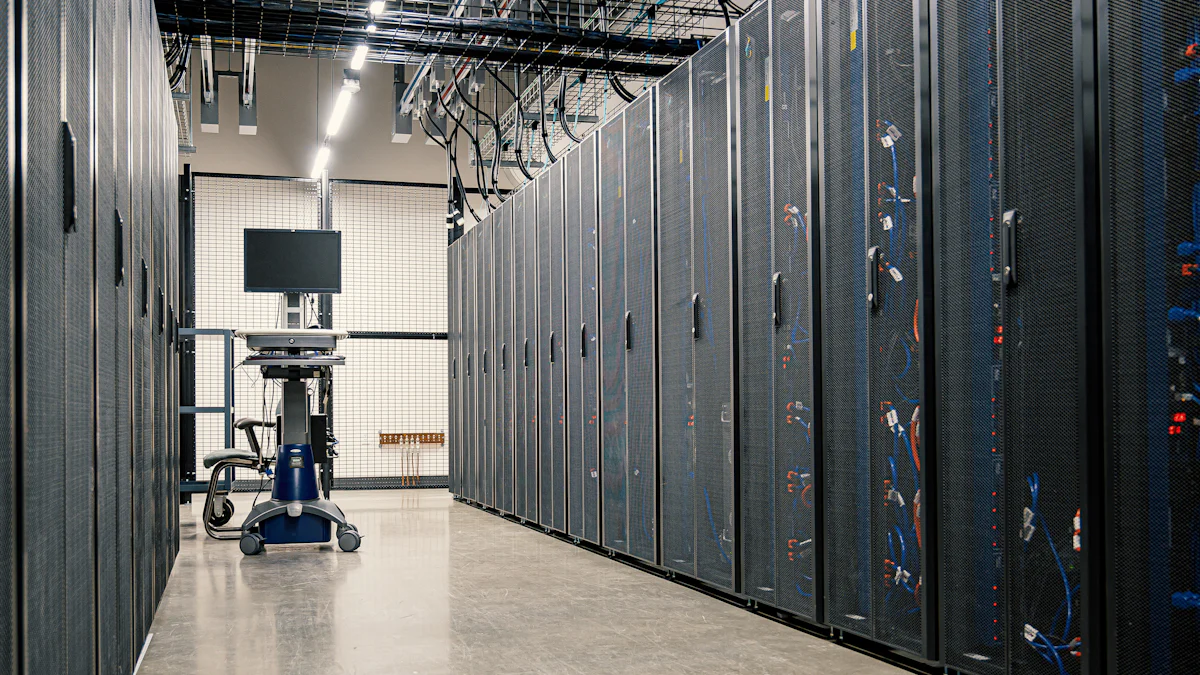Which Rackmount Enclosure Depth Options Suit You Best?

Selecting the right rackmountenclosuredepthoptions is crucial for optimizing your setup. You need to consider factors like the size of your equipment, airflow requirements, and cable management needs. Adjustable depth enclosures provide the flexibility to fit various devices while ensuring proper organization. They also help you future-proof your setup by accommodating potential expansions. Choosing the correct depth enhances performance, prevents overheating, and keeps your workspace tidy. By making an informed decision, you ensure compatibility and scalability for your equipment.
Key Takeaways
Choosing the right rackmount enclosure depth is essential for optimizing equipment performance, ensuring proper airflow, and maintaining a tidy workspace.
Adjustable depth enclosures provide flexibility to accommodate various equipment sizes, making them ideal for data centers, home labs, and audio-visual installations.
Effective cable management is crucial; look for enclosures with features like cable access ports and detachable brackets to keep your setup organized and efficient.
Plan for future scalability by selecting modular designs that allow for easy upgrades and expansions without needing a complete overhaul of your setup.
Always measure your equipment accurately and allow extra space for airflow and cable connections to prevent overheating and ensure compatibility.
What Are Adjustable Depth Rackmount Enclosures?

Definition and Purpose
Adjustable depth rackmount enclosures are versatile solutions designed to house and protect your equipment while offering flexibility in depth configurations. These enclosures allow you to modify the mounting depth to fit various devices, ensuring compatibility with different sizes and types of equipment. They are fully compatible with standard EIA-310 19-inch server racks, making them suitable for a wide range of applications. Whether you need recessed, centered, or flushed mounting options, these enclosures provide the adaptability you require.
Benefits of Adjustable Depth
Flexibility for Different Equipment Sizes
Adjustable depth enclosures accommodate equipment of varying dimensions, from shallow devices to deeper servers. For example, modern data centers often require racks with depths of 42 inches or more to fit larger equipment without compromising airflow or cable management. This flexibility ensures that your rackmountenclosuredepthoptions meet the specific needs of your setup.
Improved Organization and Cable Management
These enclosures feature large rectangular cable access ports on both sides, simplifying cable routing and reducing clutter. Detachable rackmount ear brackets and multiple mounting positions further enhance organization. By keeping cables neatly arranged, you improve accessibility and maintain a clean, professional appearance.
Future-Proofing for Scalability
Adjustable depth enclosures prepare your setup for future expansions. Their modular design allows you to add or replace equipment without needing a complete overhaul. This adaptability ensures that your rackmountenclosuredepthoptions remain relevant as your requirements evolve.
Common Use Cases
Data Centers
Data centers benefit greatly from adjustable depth enclosures. With server racks often requiring depths of 42 to 48 inches, these enclosures provide the space needed for modern, deeper servers. They also support efficient cooling and cable management, critical for maintaining optimal performance.
Home Labs
For home labs, adjustable depth enclosures offer a compact yet flexible solution. You can easily integrate them into your workspace, accommodating various devices like routers, switches, and small servers. Their easy installation and adaptability make them ideal for personal projects.
Audio-Visual Installations
In audio-visual setups, these enclosures house equipment like amplifiers, mixers, and processors. Their heavy-duty construction ensures durability, while the adjustable depth design allows you to fit devices of different sizes seamlessly.
Key Factors to Consider for RackmountEnclosureDepthOptions
Equipment Size and Compatibility
Measuring Your Equipment
Accurate measurements are essential when selecting a rackmount enclosure. You need to measure the width, depth, and height of your equipment to ensure compatibility. Use the table below as a reference for standard dimensions:
Dimension | Standard Size | Notes |
|---|---|---|
Width | 24 inches | Extra wide options available |
Depth | 42 inches | Options for mid-depth (36 inches) and shallow-depth (32 inches) available |
Height | Common heights are 42U, 45U, and 48U | Determines available rack spaces |
By following these guidelines, you can avoid purchasing an enclosure that is too small or unnecessarily large for your setup.
Ensuring Proper Fit
Ensuring a proper fit involves more than just matching dimensions. Verify that your equipment aligns with the mounting holes and that there is enough clearance for connectors and cables. Double-check the specifications of your rackmountenclosuredepthoptions to confirm compatibility with your devices. This step prevents installation issues and ensures a secure setup.
Cooling and Airflow Requirements
Importance of Ventilation
Proper ventilation is critical for maintaining the performance and longevity of your equipment. Follow these best practices to optimize airflow:
Leave extra space around components that generate significant heat.
Stack cooler-running devices closer together to conserve space.
Maintain clearance from walls and doors to improve air circulation.
Align internal fans with air conditioning intakes for efficient cooling.
These measures help prevent overheating and ensure consistent performance.
Avoiding Overheating
Overheating can damage sensitive electronics and disrupt operations. Use enclosures with vented panels or integrated cooling systems to manage heat effectively. Monitor temperature levels regularly and adjust the setup if necessary. Proactive cooling management safeguards your equipment and reduces downtime risks.
Cable Management
Space for Cables and Connectors
Efficient cable management requires adequate space for routing and organizing cables. Ensure your enclosure has features like cable access ports and lacer strips to accommodate large bundles. Segregate power and signal cables to minimize interference and maintain system integrity.
Maintaining a Clean Setup
A clean setup improves both functionality and aesthetics. Follow these steps for effective cable management:
Maintain proper bend radii to prevent cable stress.
Eliminate sharp edges to avoid damage.
Organize cables to enhance airflow and reduce hotspots.
Use color-coded labels for easy identification.
Invest in accessories like horizontal lacer bars and tie saddles for better organization.
Proper cable management not only enhances performance but also simplifies maintenance.
Scalability and Future Needs
Planning for Additional Equipment
When planning for scalability, you must ensure your rackmount enclosure can accommodate both current and future equipment. Start by evaluating the size and capacity of the enclosure. Choose one that provides enough space for your existing hardware while leaving room for future additions. This approach minimizes the need for frequent upgrades and ensures long-term usability.
Weight capacity is another critical factor. Estimate the total weight of your equipment and select an enclosure that can handle the load. Place heavier devices at the bottom to maintain stability and prevent tipping. Proper equipment placement also plays a vital role in scalability. Plan the layout of your devices in advance, considering future expansions and cable routing. This foresight helps you avoid overcrowding and ensures efficient use of space.
Ventilation is equally important. Opt for enclosures with perforated doors or integrated fans to maintain proper airflow. Adequate cooling prevents overheating, which can damage sensitive electronics. Durable materials like aluminum enhance the enclosure's longevity, making it a reliable choice for growing setups.
Modular Designs for Expansion
Modular designs offer unmatched flexibility for future growth. These enclosures allow you to add or remove components as needed, making them ideal for dynamic environments. For instance, you can easily integrate additional CPUs, memory, or storage without disrupting your existing setup. This adaptability supports seamless upgrades and ensures your system evolves with your needs.
The advantages of modular designs extend beyond flexibility. They promote scalability by accommodating new servers and networking equipment without requiring significant changes. Businesses can customize their setups by opting for larger enclosures or stackable units, increasing capacity as needed. Modular enclosures also maximize space efficiency, allowing you to organize and manage your equipment effectively.
Advantage | Description |
|---|---|
Scalability | Modular designs can easily accommodate additional servers and networking equipment without major changes. |
Customization | Businesses can opt for larger enclosures or stackable units to increase capacity. |
Space Efficiency | Modular enclosures maximize space utilization, allowing for better organization and management. |
By investing in modular rackmountenclosuredepthoptions, you future-proof your setup while maintaining a clean and organized workspace. This approach ensures your infrastructure remains adaptable and efficient as your requirements grow.
Top Rackmount Enclosures with Adjustable Depth
Outdoor Telecom Cabinet by Tianjin Estel
Key Features
The Outdoor Telecom Cabinet by Tianjin Estel offers a robust solution for outdoor telecommunications infrastructure. Its standout features include:
Customizable configurations to meet specific depth and equipment requirements.
Construction using durable materials like steel, aluminum alloy, and stainless steel, ensuring long-term reliability.
Multiple cooling options, such as air conditioners, heat exchangers, and fans, to suit diverse environmental conditions.
This cabinet’s adaptability and durability make it an excellent choice for outdoor setups requiring adjustable depth.
Pros and Cons
Pros:
High resistance to harsh weather conditions due to its IP55 rating.
Anti-theft locking mechanism enhances security.
Spacious interior accommodates standard 19-inch racks.
Cons:
May require professional installation for optimal setup.
Hammond RM Series
Key Features
The Hammond RM Series is a versatile rackmount enclosure designed for various applications. It features a sturdy steel frame that ensures durability and stability. The adjustable depth design allows you to customize the enclosure to fit your equipment perfectly. Additionally, its vented panels promote efficient airflow, reducing the risk of overheating.
Pros and Cons
Pros:
Easy to assemble and adjust.
Excellent ventilation for cooling.
Compatible with a wide range of equipment sizes.
Cons:
Limited cable management options compared to other models.
IRP10825S 8U Rackmount
Key Features
The IRP10825S 8U Rackmount stands out for its user-friendly design and adjustable depth options. It supports three mounting positions—recessed, centered, or flushed—offering flexibility for various setups. Its compatibility with standard EIA-310 19-inch server racks ensures seamless integration into your system.
Pros and Cons
Pros:
Benefit Description | Details |
|---|---|
Ease of Installation | The design eliminates the need for drilling, making setup quicker. |
Adjustable Depth Options | Three mounting positions maximize installation space. |
Compatibility | Fully compatible with standard EIA-310 19" server racks. |
Cons:
Limited to smaller setups due to its 8U height.
These enclosures provide excellent rackmountenclosuredepthoptions for various needs, ensuring flexibility, durability, and compatibility.
Tripp Lite 25U Standard Depth Server Rack
Key Features
The Tripp Lite 25U Standard Depth Server Rack offers a robust and versatile solution for housing your IT equipment. Its specifications make it a standout choice for both professional and personal setups:
Specification | Detail |
|---|---|
Capacity | 25U |
Depth | Up to 37" (1050mm) |
Load Capacity | 3000 lbs (stationary), 2250 lbs (rolling) |
Security | Locking, removable front and rear doors; locking side panels |
Assembly | Ships fully assembled |
Ventilation | 65+% open space in door perforation pattern |
Warranty | 5 years limited |
Cable Access | Top and bottom cable routing ports |
Compatibility | Standard 19" rack equipment |
Installation | Tool-less accessory mounting rails |
Grounding | Convenient grounding system with multiple connections |
This rackmount enclosure provides excellent ventilation, ensuring your equipment stays cool even during heavy use. Its tool-less accessory mounting rails simplify installation, while the locking doors and panels enhance security.
Pros and Cons
Pros:
High load capacity supports heavy equipment.
Ships fully assembled, saving you time and effort.
Excellent ventilation with over 65% open space in the perforated doors.
Convenient cable routing ports for better organization.
Cons:
Limited depth may not accommodate extremely deep equipment.
StarTech.com Adjustable Vented Rack Mount Shelf
Key Features
The StarTech.com Adjustable Vented Rack Mount Shelf is a durable and adaptable solution for your rackmount setup. Its features include:
Feature | Description |
|---|---|
Adjustable Depth | Can be adjusted from 19.5in to 38in to fit various rack sizes. |
High Weight Capacity | Supports up to 250lbs (113kg) of equipment. |
Durable Construction | Made from 1.2mm SPCC commercial grade cold-rolled steel for durability. |
TAA Compliance | Meets the requirements of the US Federal Trade Agreements Act (TAA). |
Vented Design | Improves airflow and helps lower temperatures in the rack. |
This shelf’s adjustable depth makes it compatible with a wide range of rack sizes. Its vented design enhances airflow, reducing the risk of overheating. The high weight capacity ensures it can support even heavy equipment securely.
Pros and Cons
Pros:
Adjustable depth provides flexibility for different rack sizes.
Durable construction ensures long-term reliability.
Vented design promotes better airflow and cooling.
High weight capacity supports heavy equipment.
Cons:
May require additional brackets for non-standard racks.
These two options provide excellent rackmountenclosuredepthoptions for various needs, ensuring flexibility, durability, and compatibility.
How to Measure and Adjust Rackmount Enclosure Depth

Tools You’ll Need
Before you begin, gather the necessary tools to ensure accurate measurements and adjustments. Here’s a list of essential items:
Measuring Tape: For precise equipment and enclosure measurements.
Screwdriver Set: To adjust mounting brackets and secure components.
Level Tool: To ensure proper alignment during installation.
Cable Ties: For organizing cables after adjustments.
Flashlight: To illuminate hard-to-reach areas inside the enclosure.
Having these tools on hand will streamline the process and help you avoid unnecessary delays.
Step-by-Step Guide
Measuring Your Equipment
Measure the Depth: Use a measuring tape to determine the depth of your equipment, including any protruding connectors.
Check the Width: Ensure your equipment conforms to the standard 19-inch rack width.
Account for Clearance: Add extra space for airflow and cable connections. This prevents overheating and ensures proper cable routing.
Record Dimensions: Write down the measurements to reference during the adjustment process.
Adjusting the Enclosure Depth
Loosen the Mounting Brackets: Use a screwdriver to loosen the brackets inside the enclosure.
Set the Desired Depth: Adjust the brackets to match the depth of your equipment. Ensure the depth accommodates future additions.
Secure the Brackets: Tighten the screws to lock the brackets in place. Double-check for stability.
Testing for Compatibility
Install Equipment: Place your equipment inside the enclosure and align it with the mounting holes.
Verify Fit: Ensure there’s enough clearance for cables and connectors.
Test Stability: Shake the enclosure gently to confirm that the equipment is secure.
Common Mistakes to Avoid
Avoid these common pitfalls to ensure a smooth process:
No Appropriate Planning: Failing to plan can lead to mismatched rack sizes or insufficient space for equipment.
Not Installing the Proper PDU: Using an inadequate power distribution unit can cause power outages or equipment damage.
Using Cables Without Labels: Unlabeled cables create confusion during troubleshooting and increase fire risks.
By planning carefully and following these steps, you can optimize your rackmountenclosuredepthoptions for performance and scalability.
Choosing the right rackmountenclosuredepthoptions ensures your setup remains efficient and scalable. Start by evaluating critical factors like equipment size, airflow, and cable management. For instance, standard rack depths range from 400mm to 1200mm, with deeper racks offering better cable management and airflow. Always measure your equipment's depth and add 4 to 6 inches for cable clearance to avoid compatibility issues.
Use the recommended products and follow the measurement guide to simplify your decision-making process. By planning carefully, you can create a setup that supports your current needs while accommodating future growth.
FAQ
What is the standard depth for rackmount enclosures?
The standard depth for rackmount enclosures ranges from 400mm (15.75 inches) to 1200mm (47.24 inches). You should choose a depth based on your equipment's size and future scalability needs. Always measure your devices and allow extra space for cables and airflow.
How do I ensure proper cooling in my rackmount enclosure?
To ensure proper cooling, use enclosures with vented panels or integrated cooling systems. Position heat-generating equipment with adequate spacing. Align internal fans with air conditioning intakes. Regularly monitor temperature levels to prevent overheating and maintain optimal performance.
Can I use adjustable depth enclosures for non-standard equipment?
Yes, adjustable depth enclosures offer flexibility for non-standard equipment. You can modify the mounting depth to fit unique device sizes. Ensure the enclosure provides enough clearance for connectors and cables to avoid compatibility issues.
What tools are essential for adjusting rackmount enclosure depth?
You’ll need a measuring tape, screwdriver set, level tool, cable ties, and a flashlight. These tools help you measure equipment accurately, adjust brackets securely, and organize cables efficiently for a clean and functional setup.
Are adjustable depth enclosures suitable for outdoor use?
Yes, some adjustable depth enclosures, like the Outdoor Telecom Cabinet by Tianjin Estel, are designed for outdoor use. These enclosures feature weather-resistant materials, anti-theft mechanisms, and integrated cooling systems to protect equipment in harsh environments.
See Also
10 Best Outdoor Cabinets Built for Extreme Weather
Selecting the Ideal Mount for Outdoor Telecom Cabinets
Understanding Outdoor Enclosure Cabinets and Their Advantages
Enhancing Outdoor Cabinets Through Power and Cooling Solutions
CALL US DIRECTLY
86-13752765943
3A-8, SHUIWAN 1979 SQUARE (PHASE II), NO.111, TAIZI ROAD,SHUIWAN COMMUNITY, ZHAOSHANG STREET, NANSHAN DISTRICT, SHENZHEN, GUANGDONG, CHINA

